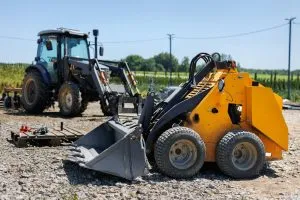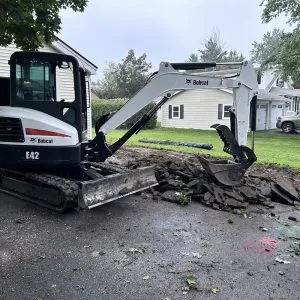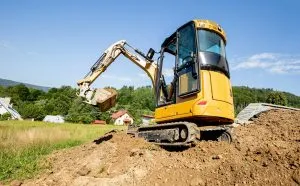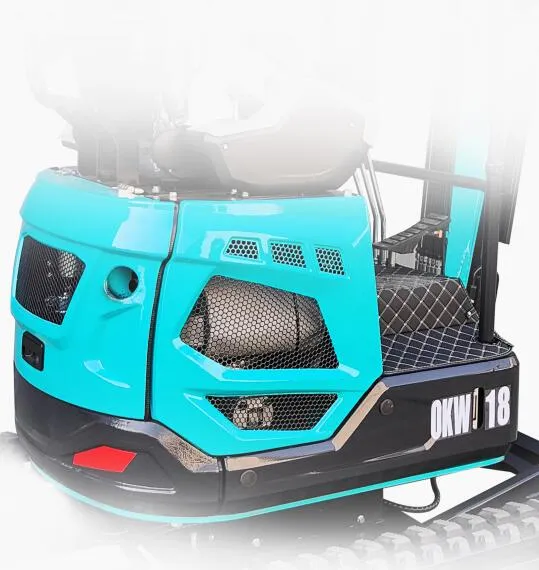Introduction
Mini excavators, also known as compact excavators, have become indispensable in the construction and landscaping industries. Their versatility, efficiency, and ability to perform tasks in confined spaces make them a valuable asset. This article delves into the different types of mini excavators, their significance, and a detailed guide on how to operate them.

Understanding Mini Excavators
Mini excavators are smaller versions of standard excavators, designed for light to medium-duty tasks. They typically weigh between 1 to 10 tons and are equipped with a backfill blade and independent boom swing.
Types of Mini Excavators
1. Standard Mini Excavators Standard mini excavators are the most common type, known for their balance between power and size. They are ideal for general construction tasks, including digging, trenching, and material handling.
2. Zero Tail Swing Excavators Zero tail swing mini excavators are designed for work in tight spaces. Their body remains within the width of the tracks while rotating, reducing the risk of damage and increasing maneuverability.
3. Reduced Tail Swing Excavators These excavators have a smaller overhang compared to standard mini excavators but offer more stability and lifting capacity than zero tail swing models. They strike a balance between power and compactness.
4. Mini Hydraulic Excavators Mini hydraulic excavators use advanced hydraulic systems to deliver increased power and precision. They are suitable for tasks requiring detailed excavation and fine grading.
5. Electric Mini Excavators Electric mini excavators are an eco-friendly alternative to diesel-powered models. They are ideal for indoor use and urban construction sites where noise and emissions are a concern.

Importance of Mini Excavators
1. Versatility Mini excavators can handle various tasks, including digging, trenching, grading, and demolition. Their compatibility with multiple attachments, such as augers, breakers, and thumbs, enhances their utility.
2. Accessibility Their compact size allows mini excavators to operate in confined spaces where larger machines cannot fit. This makes them ideal for urban construction, residential projects, and landscaping.
3. Cost-Effectiveness Mini excavators are more affordable to purchase and maintain compared to larger excavators. Their fuel efficiency and lower operating costs contribute to significant savings over time.
4. Precision and Control The advanced hydraulic systems and compact design of mini excavators provide superior control and precision. This is particularly beneficial for tasks requiring detailed work, such as utility installations and fine grading.
5. Safety Mini excavators are designed with operator safety in mind. Features such as rollover protective structures (ROPS), ergonomic controls, and excellent visibility contribute to a safer working environment.
How to Use Mini Excavators
1. Pre-Operation Inspection Before using a mini excavator, conduct a thorough inspection. Check fluid levels, including engine oil, hydraulic oil, and coolant. Inspect the tracks, undercarriage, and attachment points for signs of wear or damage. Ensure all safety features are functional.
2. Starting the Excavator To start the mini excavator, enter the cab and fasten your seatbelt. Insert the key into the ignition and turn it to the start position. Allow the engine to warm up for a few minutes, monitoring the gauges for any irregularities.
3. Basic Controls Familiarize yourself with the basic controls, including:
- Joystick Controls: Used for operating the boom, arm, and bucket.
- Foot Pedals: Used for controlling the travel of the excavator.
- Throttle: Adjusts the engine speed.
- Blade Control Lever: Raises and lowers the backfill blade.
4. Operating the Boom, Arm, and Bucket
- Raising and Lowering the Boom: Push the left joystick forward to raise the boom and pull it backward to lower the boom.
- Extending and Retracting the Arm: Push the right joystick forward to extend the arm and pull it backward to retract the arm.
- Bucket Control: Move the right joystick to the left to curl the bucket inwards and to the right to extend it outwards.
5. Moving the Excavator
- Traveling: Use the foot pedals to move the excavator forward or backward. Press both pedals forward to move straight ahead and both pedals backward to reverse.
- Turning: To turn, press one pedal forward and the other pedal backward.
6. Using Attachments Mini excavators can be equipped with various attachments for different tasks. Ensure the attachment is securely fastened before use. Follow the manufacturer’s guidelines for operating each specific attachment.
7. Safety Tips
- Stay Aware of Your Surroundings: Always be mindful of people, obstacles, and overhead hazards.
- Stability: Keep the excavator balanced by maintaining a low center of gravity and avoiding sudden movements.
- Communication: Use hand signals or communication devices when working with a team.
- Proper Shutdown: At the end of your operation, lower the boom and blade, turn off the engine, and lock the cab.

FAQs
What are the main benefits of using a mini excavator? Mini excavators offer versatility, accessibility, cost-effectiveness, precision, and enhanced safety, making them ideal for various construction and landscaping tasks.
How do zero tail swing mini excavators differ from standard ones? Zero tail swing mini excavators have no overhang, allowing them to rotate within the track width, which is advantageous for working in tight spaces.
Can mini excavators be used indoors? Yes, electric mini excavators are suitable for indoor use due to their low noise and zero emissions.
What attachments can be used with mini excavators? Mini excavators can use a range of attachments, including augers, hydraulic hammers, thumbs, and buckets, enhancing their functionality for various tasks.
How often should I conduct maintenance on a mini excavator? Regular maintenance should be performed as per the manufacturer’s guidelines, typically including daily inspections, weekly checks, and scheduled servicing.
Is it difficult to operate a mini excavator? While operating a mini excavator requires some training and practice, the controls are designed to be user-friendly, making it accessible for operators with basic training.
Conclusion
Mini excavators are a crucial component in the construction and landscaping industries. Their versatility, compact size, and efficiency make them suitable for a wide range of tasks. By understanding the different types of mini excavators, their importance, and how to operate them safely and effectively, you can maximize their potential on any job site.






